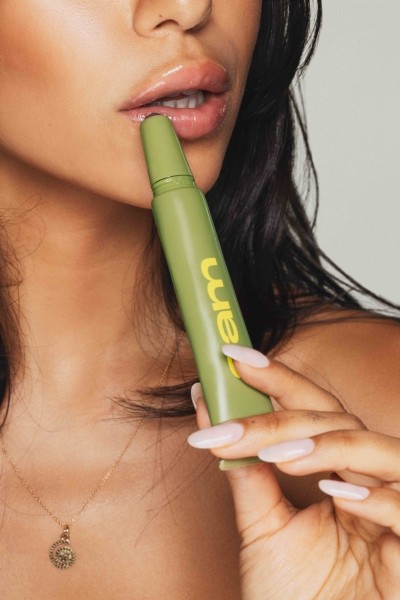Formulating next-generation feminine care with a microbiome focus

CosmeticsDesign Europe (CDE): How is the women's intimate care category evolving?
Carole Gheradi (CG): Today's femcare has evolved from basic hygiene to overall well-being, blurring the lines between beauty and wellness. This shift has led to a heightened emphasis on sexual and vulvovaginal health. Beyond cleansing, consumers now seek intimate care products that offer skin enhancing benefits like moisturisation, microbiome balance, and fortification of the skin’s natural barrier.
Moreover, consumers are in search of user-friendly products designed to alleviate discomfort in the intimate area, recognising that genital skin differs physiologically from facial skin. Genital skin is also subject to conditions involving higher temperatures and moisture levels due to its semi-occlusive environment, making it more susceptible to irritation caused by friction during a work-out.
CDE: Does this category have a lot of potential for growth in the near future?
(CG) There is definitely a lot of potential for growth with increasing awareness and destigmatisation of sexual and vulvovaginal health. According to market intelligence company Mintel, 49% of US Gen Z consumers say that they are comfortable talking about feminine hygiene with others.
The broader wellness and evolved self-care trends are also driving consumer interest in products that promise to promote well-being, comfort, and confidence. This would steer the expansion of the intimate care category.
CDE: How can brands use pre and probiotics in these kinds of products?
CG: Brands can incorporate pre and probiotics into broad-ranging intimate care products, from topical moisturisers to dietary supplements. For example, intimate care cleansers or moisturisers can be formulated with prebiotics to maintain a healthy pH balance, support the dynamic microbiome environment, and provide moisturisation benefit to the vaginal area, especially for women experiencing dryness or discomfort.
Maider Gutierrez (MG): Oral probiotic supplements containing strains that target the vaginal microbiome can help provide a systemic approach to microbiome balance as well.
Supplementation with probiotics is an attractive approach to support vaginal bacterial balance and to help maintain vaginal health. For example, HOWARU® Feminine Health is a product for overall vaginal health and wellness. It combines Lacticaseibacillus rhamnosus HN001™ and Lactobacillus acidophilus La-14® in clinically studied formula to promote healthy vaginal microbiota in addition to promoting bacterial balance during times of vaginal dysbiosis.
CG: IFF offers a diverse pre and probiotics portfolio for the intimate care category. GENENCARE® XL (INCI: Xylitol) is a prebiotic moisturiser that supports microbiome profile of skin. This active ingredient is upcycled from a paper production side stream and can provide moisturisation benefits and improve microbiome diversity.
CDE: In terms of considering the microbiome, but also sensorial factors, what should brands be mindful of on this topic?
CG: Traditionally centred on hygiene, intimate care has overlooked the role of experience in driving usage. Moreover, genital skin is subject to conditions involving higher temperatures and moisture levels due to its semi-occlusive environment – making it more susceptible to irritation caused by friction during work-out or motion.
Not only do products formulated for this category have to be easy to use they also need to provide prolonged comfort and a luxurious and pleasurable texture that feels soft or silky against the skin. Novel sensorial aspects to enhance user experience such as cooling, warming sensation can also help to heighten the overall sensory experience and add an element of excitement.
CDE: What are the potential NPD challenges for this this category?
CG: Brands should be mindful that the skin in the genital area is different than that of our facial skin or on the rest of our bodies. The intimate skin is a mucosa without stratum corneum just like the lips, hence it is more sensitive to external aggressions and also more permeable and prone to dehydration.
During the ingredient selection process, attention must be paid to the characteristics. For example, is it a mild ingredient that is gentle on skin? Does it contain skin irritants like sulphates or alcohol which might cause irritation or dehydration of the mucosa?
pH is a key parameter to take into consideration. It might need to be adjusted to the physiology related to the age of the targeted consumer group (teenager, active, pregnant or menopaused women) if targeting different consumer groups.
For new product development, this category may evolve from one large category of ‘intimate care’ to a more segmented category into different product lines targeting these different group of women to address their specific age group needs.
Finally, a combination of active ingredients that strengthen the skin barrier and support the microbiome balance is particularly helpful.
CDE: How do you think it will evolve over the next five years?
(CG) The intimate care category will take cues from the beauty and personal care industry and continue to transform beyond basic hygiene and address holistic wellness. Mintel data showed that 47% of adults agree that a beauty routine can aid relaxation and the intimate care category could follow a similar trend where products focus on mental and emotional well-being, incorporating ingredients or features that encourage relaxation.
Another trend in beauty and personal care is ‘skinification’ where skincare principles, for example, elaborated multi-step routines, proven active ingredients, innovative technology are extended into a multitude of applications and this includes intimate care.
Finally, there is an emphasis on personalisation and customisation in beauty and personal care. This may influence intimate care category – where intimate care products become more tailored to individual needs, with formulations and options to cater to specific lifestyles, skin types, sensitivities, preferences, and age groups.






















